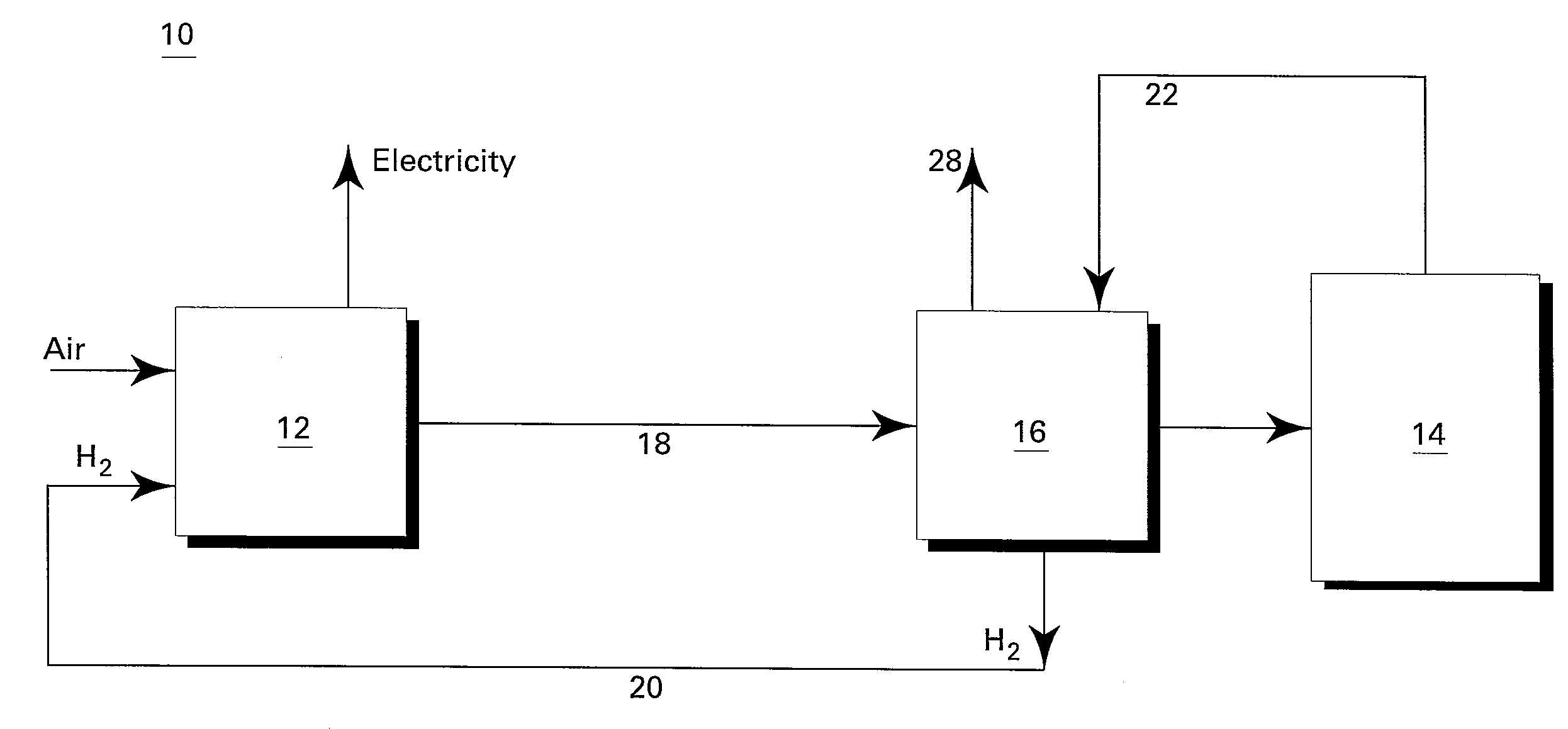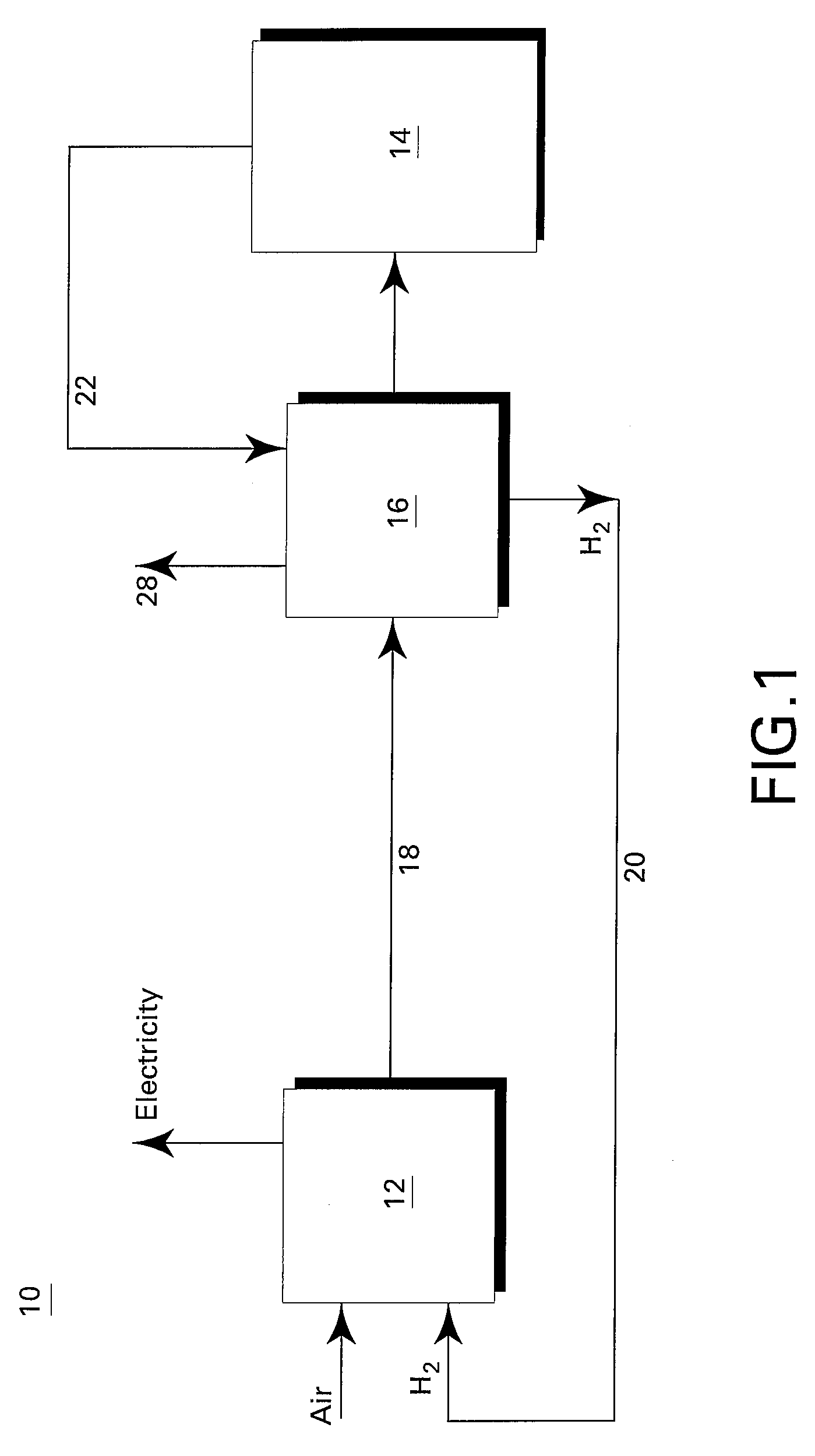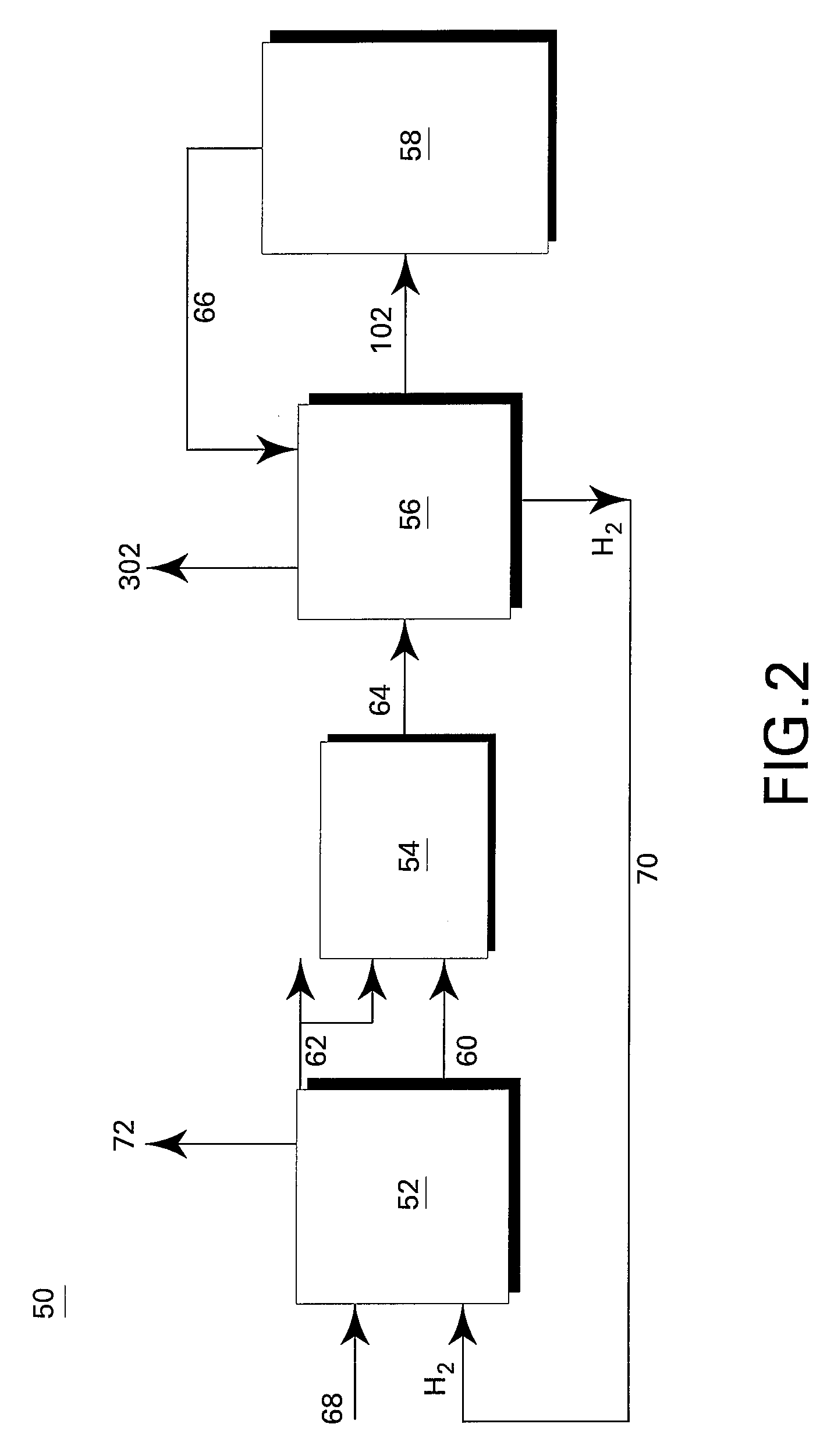Fuel cell system
a fuel cell and system technology, applied in the field of fuel cell systems, can solve the problems of low energy efficiency of the system, complex system, and widespread beli
- Summary
- Abstract
- Description
- Claims
- Application Information
AI Technical Summary
Benefits of technology
Problems solved by technology
Method used
Image
Examples
Embodiment Construction
[0018] A fuel cell system 10 comprising a fuel cell 12, a liquid storage tank 14 and a catalyst reactor 16 is shown in FIG. 1. Typically, fuel cell 12 is a PEM fuel cell. As shown hydrogen (H2) and air electrochemically react within fuel cell 12 to produce electricity and an exhaust 18. The exhaust 18 is typically used to heat the reactor 16 and the catalyst to a temperature suitable to dehydrogenate hydrogen 20 from a hydrogen-charged liquid 22 that is fed into the reactor 16 from the liquid storage tank 14. The exhaust 18 typically consists of water in the form of steam or moisture, nitrogen, and small quantities of hydrogen. After heating the reactor 16 and the catalyst, the remaining exhaust 28 vents outside of the system. Fuel cell system 10 is suited for many applications, especially for powering an automobile or other vehicles.
[0019] As discussed above, a significant challenge associated with implementing fuel cell system 10 into an automobile is the temperature required to ...
PUM
 Login to View More
Login to View More Abstract
Description
Claims
Application Information
 Login to View More
Login to View More - R&D
- Intellectual Property
- Life Sciences
- Materials
- Tech Scout
- Unparalleled Data Quality
- Higher Quality Content
- 60% Fewer Hallucinations
Browse by: Latest US Patents, China's latest patents, Technical Efficacy Thesaurus, Application Domain, Technology Topic, Popular Technical Reports.
© 2025 PatSnap. All rights reserved.Legal|Privacy policy|Modern Slavery Act Transparency Statement|Sitemap|About US| Contact US: help@patsnap.com



